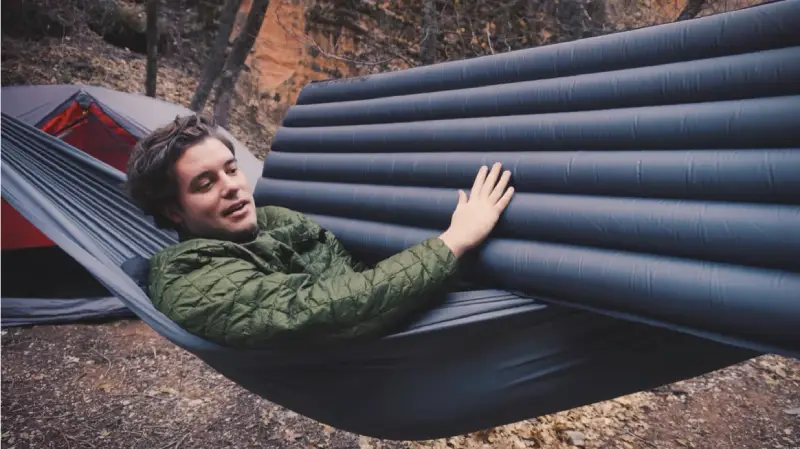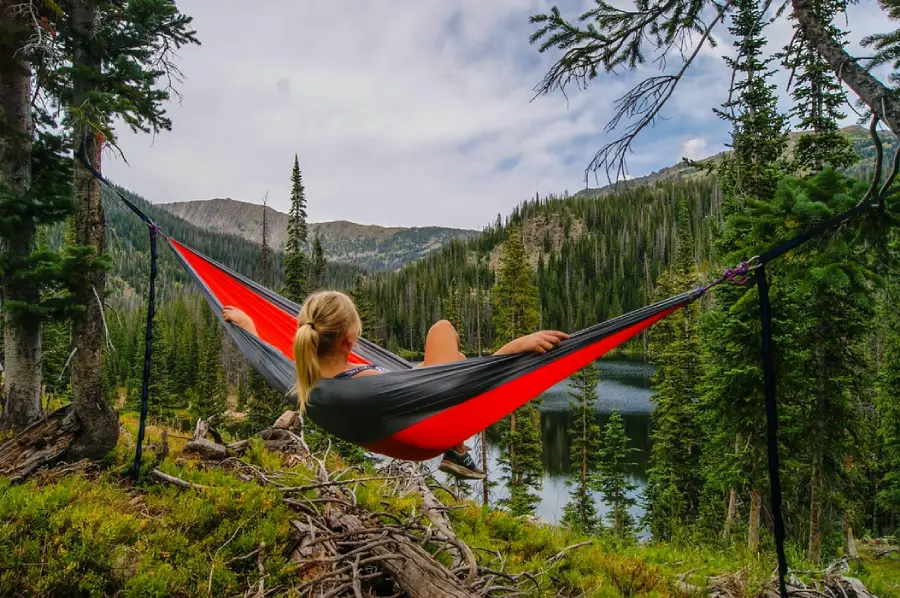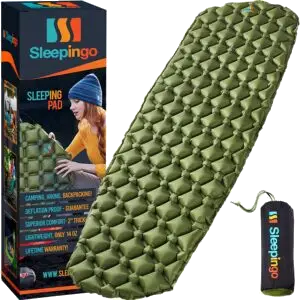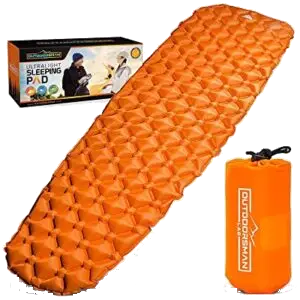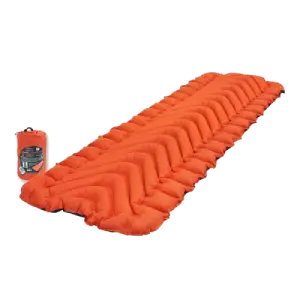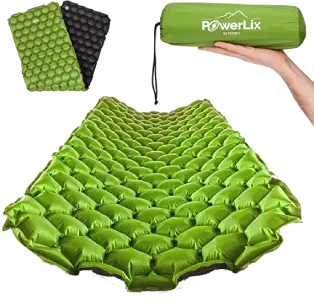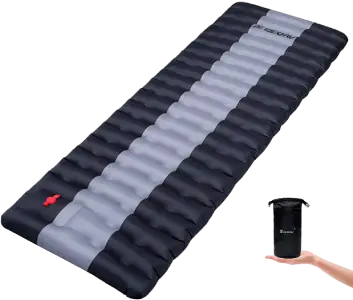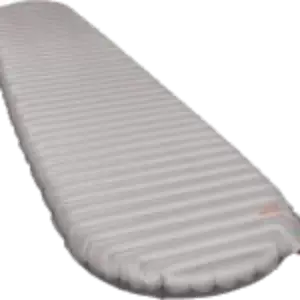
The hammock camping gives you a real-world experience of the wilderness and nature. But at the same time, you are vulnerable to the cold, wild animals, and many other things. One of the biggest challenges many campers, hikers, and backpackers face while hammock camping is the cold temperatures. Some campers use a sleeping pad in the hammock and it also works well under certain conditions.
While you camp in the wild you are left to face cold (freezing cold) at night. But how do you stay warm inside your hammock at night? The best way is to use a good-rated sleeping setup. A good and effective sleeping setup includes an underquilt and a top quilt.
Let’s look at the conditions where a sleeping pad will work well and the key benefits of using a sleeping pad in a hammock tent. There are a few things to consider when deciding whether or not to use a sleeping pad in your hammock.
- Sleeping pads can add extra insulation and comfort, which can be especially important in colder weather.
- If you are using a sleeping pad instead of a top quilt and do not have an underquilt then it is always recommended to use a sleeping pad. The sleeping bag uses the air inside the loft to provide insulation to the body. But when we sleep in the bag the body weight compresses the air and squeezes it out. This results in improper insulation and the bottom part of your body are fully exposed to the cold at the night. Your back and bottom will be cold and you will have a terrible time sleeping in the hammock. To avoid this you can use a sleeping pad. An inflatable sleeping pad uses the dead air between the pad to provide insulation to the body and helps retain body heat from sleeping away. The body weight tries to counter the air but a 2-3 inch thick sleeping pad will give sufficient insulation to the body.
- Apart from providing insulation to the body and saving you from cold the sleeping pad also gives a comfortable sleep in the camp. Sleeping in the hammock is not a pleasant experience for many as some experience back and neck pain due to no straight surface to sleep on. Your body is shagged or forms a v shape while you sleep in a hammock. But a sleeping pad creates a flat surface in the hammock and gives a comfortable sleep.
- One more reason why you should use a sleeping pad in the hammock is they are cost-effective. A sleeping pad is cheaper than an underquilt.
So a Sleeping pad is a great addition to the comfort of sleeping in a hammock. If you are not using quilts then a sleeping pad is definitely required to save all the body heat from sleeping from the bottom. Ultimately, the decision of whether or not to use a sleeping pad in your hammock is up to you and will depend on your specific needs and preferences.
